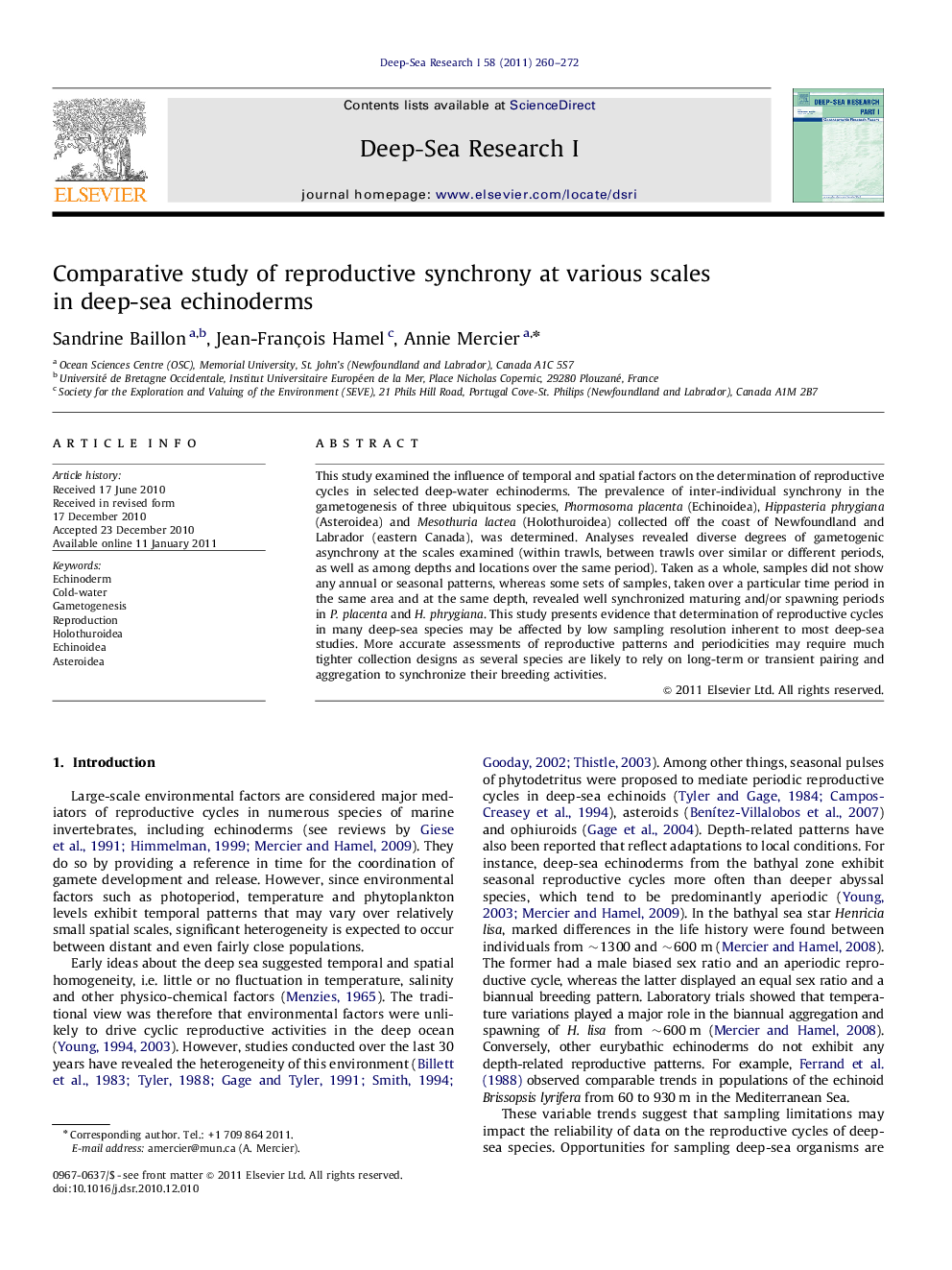| کد مقاله | کد نشریه | سال انتشار | مقاله انگلیسی | نسخه تمام متن |
|---|---|---|---|---|
| 4534996 | 1326076 | 2011 | 13 صفحه PDF | دانلود رایگان |

This study examined the influence of temporal and spatial factors on the determination of reproductive cycles in selected deep-water echinoderms. The prevalence of inter-individual synchrony in the gametogenesis of three ubiquitous species, Phormosoma placenta (Echinoidea), Hippasteria phrygiana (Asteroidea) and Mesothuria lactea (Holothuroidea) collected off the coast of Newfoundland and Labrador (eastern Canada), was determined. Analyses revealed diverse degrees of gametogenic asynchrony at the scales examined (within trawls, between trawls over similar or different periods, as well as among depths and locations over the same period). Taken as a whole, samples did not show any annual or seasonal patterns, whereas some sets of samples, taken over a particular time period in the same area and at the same depth, revealed well synchronized maturing and/or spawning periods in P. placenta and H. phrygiana. This study presents evidence that determination of reproductive cycles in many deep-sea species may be affected by low sampling resolution inherent to most deep-sea studies. More accurate assessments of reproductive patterns and periodicities may require much tighter collection designs as several species are likely to rely on long-term or transient pairing and aggregation to synchronize their breeding activities.
Research highlights
► Reproductive patterns were masked at low sampling resolution.
► Tighter samplings provided evidence of coordinated breeding patterns.
► Reproductive synchrony likely relies on aggregation of individuals.
► Reproductive synchrony may be limited to period close to spawning.
Journal: Deep Sea Research Part I: Oceanographic Research Papers - Volume 58, Issue 3, March 2011, Pages 260–272